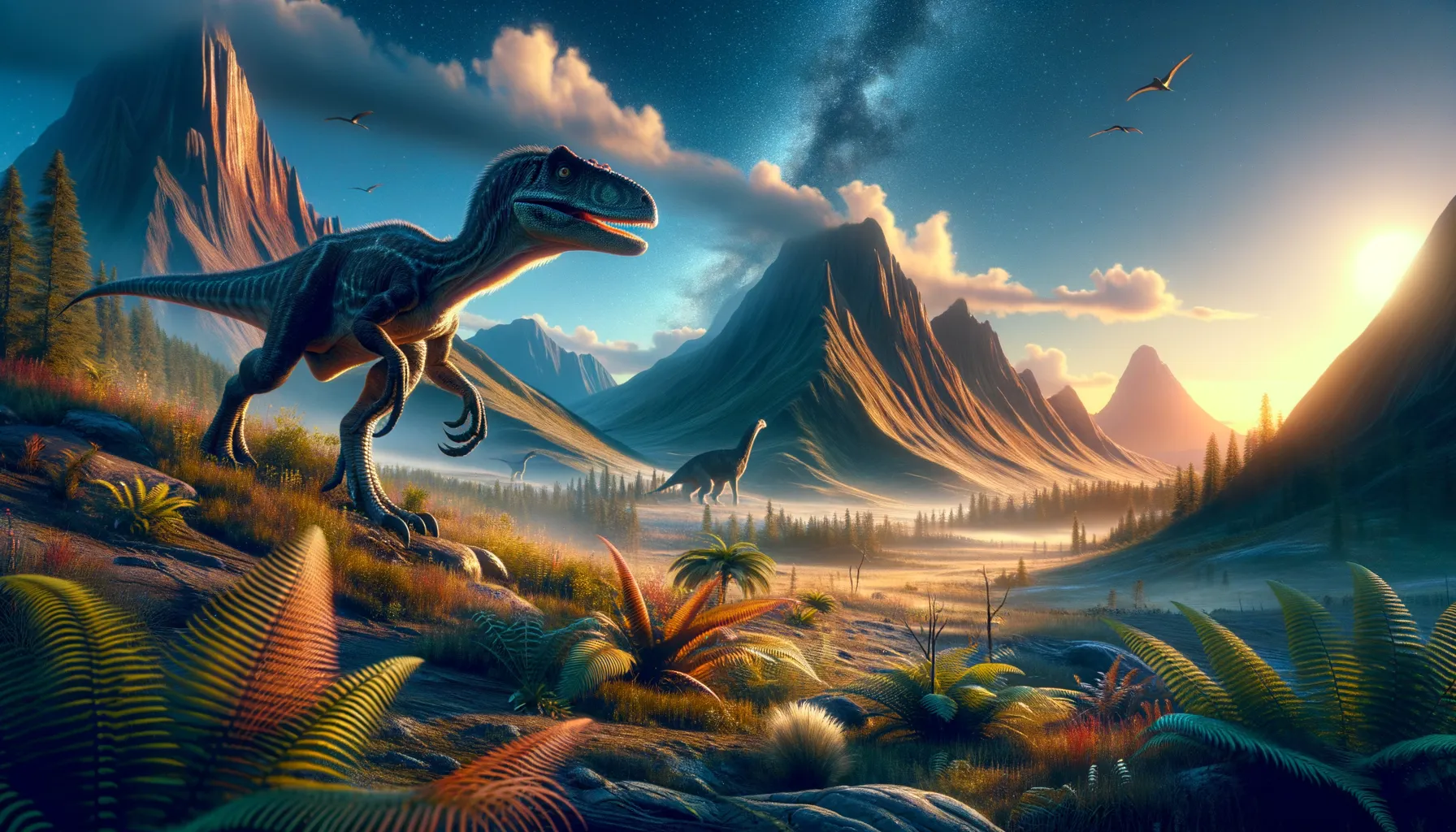
Bicentenaria
Swift predator of the Cretaceous wild.
Period
Cretaceous
Length
About 2 meters long.
Height
Around 70 centimeters tall.
Weight
Approximately 10 kilograms.
Bicentenaria was a nimble, small-sized theropod dinosaur that roamed the Earth during the early Cretaceous period. Discovered in the region now known as Argentina, this species was part of a diverse and dynamic ecosystem. Known for its moderate size and quick movements, Bicentenaria is a fascinating subject for understanding the behaviors and lifestyles of early theropods. Its fossils offer insights into the evolution and adaptation strategies of predatory dinosaurs.
Diet
Bicentenaria was carnivorous, preying on small animals and insects. It used its sharp teeth and agile movements to catch and consume its prey effectively.
Hunting
This dinosaur likely used stealth and speed to hunt, stalking its prey before a swift attack. Being relatively small, it may have relied on surprise and agility rather than strength.
Environmental challenges
Bicentenaria faced challenges such as predation by larger dinosaurs and competition for resources. Changes in climate and vegetation would have influenced its survival strategies. These challenges required constant adaptation to shifting environmental conditions.
Speed
Moderate, capable of quick bursts.
Lifespan
Estimated to live around 20 to 30 years.
First discovery
Discovered in Argentina by a research team in 2012.
Fun Facts
- Bicentenaria was a small carnivorous dinosaur that lived about 90 million years ago during the Late Cretaceous period.
- This dinosaur was discovered in Argentina, highlighting the diverse prehistoric life of South America.
- Bicentenaria is believed to have been a fast and agile hunter, growing up to 10 feet in length.
- Its name, Bicentenaria, was chosen to celebrate the 200th anniversary of Argentina's independence.
- Unlike many dinosaurs, Bicentenaria had relatively long legs, suggesting it could run quickly to catch prey.
- Fossils of Bicentenaria include well-preserved skulls and other bones, providing valuable insights into its anatomy and behavior.
- Despite being a predator, Bicentenaria was likely a social creature, possibly hunting in packs to take down larger animals.
Growth and Development
Bicentenaria experienced rapid growth in its early years, as suggested by fossil evidence. This growth allowed it to quickly reach a size that could evade smaller predators. Its development was likely influenced by available food and environmental pressures.
Habitat
Bicentenaria lived in what is now a region characterized by plains and sparse vegetation. The area supported a variety of plant life suitable for small herbivores, which in turn supported small to medium-sized carnivores. The ecosystem was dynamic, with periods of arid conditions likely impacting its habitat.
Interaction with other species
As a mid-sized predator, Bicentenaria interacted with both prey and other predators within its environment. It likely competed with similar-sized carnivores for food. Interaction with other herbivorous species was mostly as a predator and prey dynamic.
Natural lifespan
Bicentenaria's natural lifespan was estimated to be around 20 to 30 years.
Reproduction
Reproduction likely involved laying eggs, as with most theropods, with nest-building being a crucial part of their reproductive behavior. Parenting strategies might have included guarding nests from predators.
Social behaviour
Bicentenaria might have exhibited some social behavior, possibly living in small groups for hunting or protection. Social interaction would have depended on environmental pressures and predation risks.
Fossil locations
Fossils of Bicentenaria have primarily been found in Argentina, particularly in regions rich in Cretaceous-era deposits. These locations have provided valuable insights into the diversity of prehistoric life in South America.
